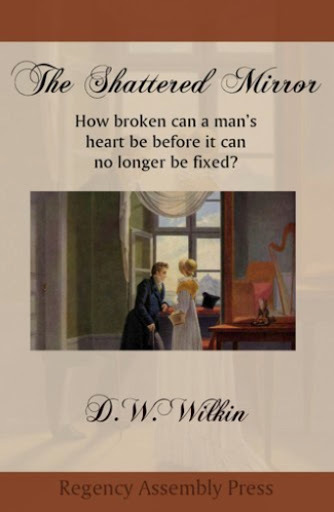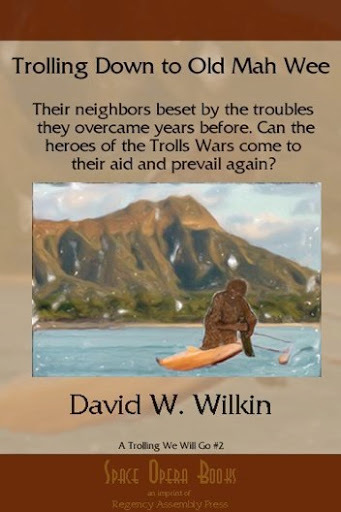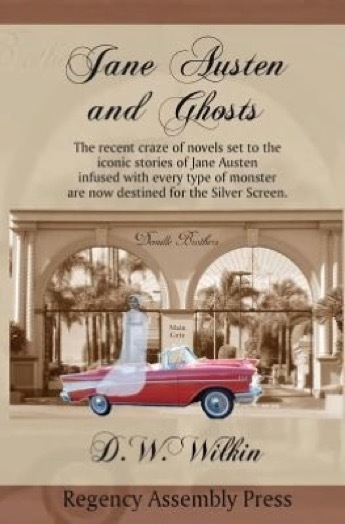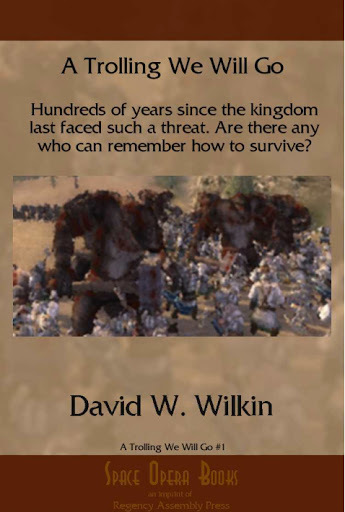D.W. Wilkin's Blog, page 13
November 23, 2016
RAP has The Shattered Mirror, A Regency Romance
The Shattered Mirror
For your enjoyment, one of the Regency Romances I published. It is available for sale and now at a reduced price of $3.99, and I hope that you will take the opportunity to order your copy.
Order for yourself or as a gift. It is now available in a variety of formats. For just a few dollars this Regency Romance can be yours for your eReaders or physically in Trade Paperback.
Barnes and Noble for your Nook
and in Trade Paperback
Bridget Halifax-Stokes was giddy with the excitement of her Season in London. Town had beckoned and her Season came on the heels of the end of the war against the tyrant. All the handsome men were returning heroes. What better year to come out?
Her father thought it all nonsense. Her mother believed that it would be the best showing of any of her daughters. More lords now available and the family’s luck that Bridget was just the perfect age.
All is fun and frivolity for Bridget until she literally crashes into Sir Patrick Hampton as he limps along the High Street. A man she knew once well from her childhood, now a stranger with dark and foreboding eyes. Eyes that had seen more than any man’s share of the war.
Feedback
If you have any commentary, thoughts, ideas about the book (especially if you buy it, read it and like it
November 22, 2016
Regency Personalities Series-Edward Valpy
Regency Personalities Series
In my attempts to provide us with the details of the Regency (I include those who were born before 1811 and who died after 1795), today I continue with one of the many period notables.
Edward Valpy
1764 – 15 April 1832
Edward Valpy was an English cleric, classical scholar and schoolteacher.
Valpy, the fourth son of Richard Valpy of St. John’s, Jersey, by his wife Catherine, daughter of John Chevalier, was born at Reading He was educated at Trinity College, Cambridge, graduating B.D. in 1810. After leaving college he acted for many years as a master at Reading grammar school under his brother, Richard Valpy.
In 1810 Valpy was elected high master of Norwich Grammar School, which flourished under his direction.
Much later, a school house was named after him. In 1819 he became rector of All Saints, Thwaite, and vicar of St. Mary, South Walsham, both in Norfolk. These livings he held till his death at Yarmouth on 15 April 1832.
Valpy wrote:
Elegantiæ Latinæ; or Rules and Exercises illustrative of Elegant Latin Style, 1803, which went through ten editions in his lifetime.
The Greek Testament, with English notes, selected and original, 3 vols. 1815; this work was well received and was much improved in a new edition of 1826 (Hartwell Horne, Compendious Introduction, 1827).
Valpy married Anne, daughter of Thomas Western of Great Abington, Cambridgeshire, and widow of Chaloner-Byng Baldock, vicar of Milton Abbey in Dorset. By her he had a son, the Rev. Edward John Western Valpy, who died in 1830.


Trolling Down to Old Mah Wee, another Fantasy
Trolling Down to Old Mah Wee
Not only do I write Regency and Romance, but I also have delved into Fantasy.
The Trolling series, (the first three are in print) is the story of a man, Humphrey. We meet him as he has left youth and become a man with a man’s responsibilities. We follow him in a series of stories that encompass the stages of life.
We see him when he starts his family, when he has older sons and the father son dynamic is tested. We see him when his children begin to marry and have children, and at the end of his life when those he has loved, and those who were his friends proceed him over the threshold into death.
All this while he serves a kingdom troubled by monsters. Troubles that he and his friends will learn to deal with and rectify. It is now available in a variety of formats.
For $2.99 you can get this 2nd book in the fantasy adventure series of Humphrey and Gwendolyn.
Barnes and Noble for your Nook
When the neighboring kingdom of Mah Wee begins to experience the same problems that beset Torahn some years before, they urgently request the aid of the experts in containing a new Troll infestation. But eradicating Trolls is not as easy as exterminating a few rats or mice.
Trolls are bigger than men, they are stronger than men, and then are meaner than men. Humphrey Cutter and his band of mismatched warriors must once again rise to the occasion, but can they without the aid of expertise of Gwendolyn and her particular skills?
Mah Wee, an ancient kingdom, with a monarch more steeped in the rights of being a king rather than the obligations and duties that a king should be. Here Humphrey and his crew finds that they have more than Trolls to overcome if they are to save Mah Wee from the same or nearly similar problems that they faced before in Torahn.
But, as Humphrey knows, nothing can truly be accomplished if the lovely Gwendolyn is not able to lend her aid as well.
Feedback
If you have any commentary, thoughts, ideas about the book (especially if you buy it, read it and like it
November 21, 2016
Regency Personalities Series-John Bligh 4th Earl of Darnley
Regency Personalities Series
In my attempts to provide us with the details of the Regency (I include those who were born before 1811 and who died after 1795), today I continue with one of the many period notables.
John Bligh 4th Earl of Darnley
30 June 1767 – 17 March 1831
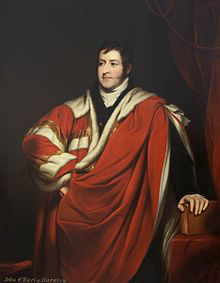
John Bligh
John Bligh 4th Earl of Darnley was a British peer and cricketer.
He was the son of John Bligh, 3rd Earl of Darnley and succeeded his father as earl on the latter’s death in 1781. He matriculated at Christ Church, Oxford on 16 November, 1784. On 3 July 1793, he was made a DCL. He resided at Cobham Hall, near Gravesend in Kent.
John Bligh was a noted amateur cricketer who made 27 known appearances in first-class cricket matches between 1789 and 1796. He and his brother, the Honourable (later General) Edward Bligh, were staunch supporters of Kent cricket. The Bligh brothers, who originated from Athboy, County Meath, have been called “the first Irish first-class cricketers”.
On 26 August 1791, he married Elizabeth Brownlow, daughter of William Brownlow, by whom he had seven children:
Lady Catherine Bligh (18 June 1792 – 10 January 1812)
John Bligh, Lord Clifton (22 May 1793 – 3 June 1793)
Edward Bligh, 5th Earl of Darnley (1795–1835)
Lady Mary Bligh (31 May 1796 – 18 June 1823), married her half-first cousin, Charles Brownlow, 1st Baron Lurgan on 1 June 1822 and had issue
Hon. William Bligh (17 May 1797 – 18 October 1807)
Hon. Sir John Duncan Bligh (1798–1872), a diplomat in Sweden and Hanover
Lady Elizabeth Bligh (d. 13 November 1872), married her first cousin Rev. John Brownlow on 19 July 1833 and had issue
Darnley Bay in the Northwest Territories, Canada was named for him by John Richardson.


Jane Austen Fans Rejoice, Jane is BACKKKK… Jane Austen and Ghosts
Special Sale Price!
Jane Austen and Ghosts.
Not only do I write Regency and Romance, but this can take a humorous turn. Some years back, I am sure readers of this blog will be aware that some writers began to take great liberty with Jane Austen and her works. Pride and Prejudice being liberally rewritten with the inclusion of zombies.
Then other books appeared with sea monsters, and werewolves and vampires. President Lincoln has even made it to the big screen where he is intent on sending foul creatures to hell. It occurred to me, even before I read any of this literature, that Jane would probably not appreciate what had been done to her classic piece.
That the tales and her life have become visual spectacles that we enjoy she might not like either, but is perhaps resigned to. That zombies, ghosts and vampires are now used to follow her own plot lines would I think, have her turning over in her grave. Jane Austen and Ghosts is my take on that.
It is now available in a variety of formats. For a limited time it has been reduced to $2.99 for your eReaders and $8.99 for paperback you can get this Jane Austen adventure.
Barnes and Noble for your Nook
and in Paperback
In the world of moviemaking, nothing is as golden as rebooting a classic tale that has made fortunes every time before when it has been adapted for the silver screen.
Certainly any work by Jane Austen made into a movie will not only be bankable, but also considered a work of art. That is of course until the current wave of adaptations that unite her classic stories with all the elements of the afterlife is attempted to be created.
That these have found success in the marketplace amongst booklovers may not be quite understood by those who make movies. But that they are a success is understood and a reason to make them into movies.
All that being said, perhaps it would also be fair to say that the very proper Jane, were she present to have anything to say about it, would not be pleased. Of course she has been away from this Earth for nearly 200 hundred years.
But does that mean were she upset enough, she wouldn’t come back?
Feedback
If you have any commentary, thoughts, ideas about the book (especially if you buy it, read it and like it
November 20, 2016
Regency Personalities Series-Sir Henry Vane-Tempest
Regency Personalities Series
In my attempts to provide us with the details of the Regency (I include those who were born before 1811 and who died after 1795), today I continue with one of the many period notables.
Sir Henry Vane-Tempest
25 January 1771 – 1 August 1813
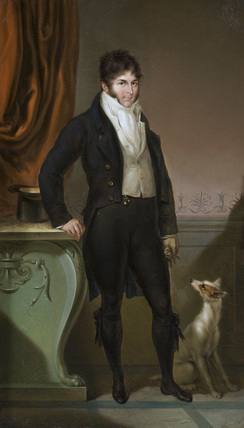
Henry Vane-Tempest
Sir Henry Vane-Tempest was the son and heir of Reverend Sir Henry Vane, 1st Baronet and his wife, Frances, née Tempest. He was Member of Parliament for the City of Durham from 1794 to 1800, replacing his uncle John Tempest from whom he inherited the Tempest estates in County Durham (notably Wynyard and Brancepeth) upon condition he adopt the name and arms of Tempest. He accepted the Chiltern Hundreds in 1800 before returning to Parliament as representative for the County Durham from 1807 until his death from apoplexy in 1813. He was appointed High Sheriff of Antrim in 1805.
Vane-Tempest inherited his father’s baronetcy in 1794. He was appointed lieutenant-colonel of the Durham volunteer cavalry in early 1797. On 25 April 1799, he married Anne MacDonnell, 2nd Countess of Antrim and they had one child, Lady Frances Anne Vane-Tempest (1800–1865), who married Lord Charles Stewart (later Marquess of Londonderry). On his death the baronetcy became extinct. He is buried at Long Newton.
Vane-Tempest was a renowned sportsman of his day, owning the celebrated racehorse Hambletonian. In a match with Mr. Cookson’s Diamond over the Beacon Course at Newmarket in 1799, Hambletonian won by a neck, Sir Henry having wagered 3,000 guineas on the outcome. The aftermath is the subject of George Stubbs’ painting “Hambletonian Rubbing Down“.


RAP (Regency Assembly Press) in need of Beta-Readers
Regency Assembly
Press
is looking for
Beta Readers
One novel is ready for Beta Reading
We have a continuation of Pride and Prejudice with Ms Caroline Bingley and her fortune at stake:
Do we think that Mr Hurst married his Bingley Bride without incentive? It is highly probable that Caroline Bingley, even though she has a sharp, acerbic tongue, still is in possession of a fortune and an astute fortune hunter who deciphers this may soon be on the road to, if not a happy marriage, one with financial security.
Please respond or send an email if you are interested


November 19, 2016
Regency Personalities Series-George Jardine
Regency Personalities Series
In my attempts to provide us with the details of the Regency (I include those who were born before 1811 and who died after 1795), today I continue with one of the many period notables.
George Jardine
1742–1827
George Jardine was born in 1742 at Wandel in Lanarkshire where his predecessors had resided for nearly two hundred years. His mother was a daughter of Weir of Birkwood, in the parish of Lesmahagow. Jardine was transferred in October 1760 from the parish school to Glasgow College, and after passing through the arts and divinity courses (MA 1765), was licensed to preach by the presbytery of Linlithgow.
In 1770 he went to Paris as tutor to the sons of William Mure of Caldwell, who obtained for him from David Hume introductions to Helvetius and D’Alembert. Soon after his return from France in July 1773, he failed to secure election to the chair of humanity at Glasgow, by a single vote, but in June 1774 was appointed professor of Greek and assistant professor in logic. In 1787 he became sole professor of logic.
Jardine gave a practical turn to the teaching of his chair, and established a system of daily examination. His classes rose from an average of fifty to nearly two hundred. He expounded his principles of teaching in his Outlines of Philosophical Education, published at Glasgow, 1818; 2nd edit. 1825. He was also an administrator and brought the finances of the college to order.
He was one of the founders in 1792, and afterwards for more than twenty years secretary, of Glasgow Royal Infirmary. For over thirty years he was the representative of the presbytery of Hamilton in the General Assembly of the Church of Scotland. He retired from the chair of logic in 1824, and died on 27 January 1827.
Jardine married in 1776 Miss Lindsay of Glasgow, whom he survived about twelve years. They had one son, John Jardine, advocate, who held the office of sheriff of Ross and Cromarty, and died in 1850.


November 18, 2016
Regency Personalities Series-Hambledon Club
Regency Personalities Series
In my attempts to provide us with the details of the Regency (I include those who were born before 1811 and who died after 1795), today I continue with one of the many period notables.
Hambledon Club
1765 – 1796
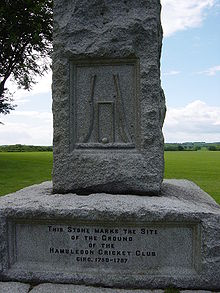
Hambledon Club
The Hambledon Club was a social club that is famous for its organisation of 18th century cricket matches. By the late 1770s it was the foremost cricket club in England.
The origin of the club, based near Hambledon in rural Hampshire, is unclear but it had certainly been founded by 1768.
Its basis was a local parish cricket team that was in existence before 1750 and achieved prominence in 1756 when it played a series of three matches versus Dartford, which had itself been a major club for at least 30 years. At this time, the parish team was sometimes referred to as “Squire Land’s Club”, after Squire Thomas Land who was apparently the main organiser of cricket teams in the village before the foundation of the club proper.
From the mid-1760s, Hambledon’s stature grew till by the late 1770s it was the foremost cricket club in England. In spite of its relative remoteness, it had developed into a private club of noblemen and country gentry, for whom one of cricket’s attractions was the opportunity it offered for betting. Although some of these occasionally played in matches, professional players were mainly employed. The club produced several famous players including John Small, Thomas Brett, Richard Nyren, David Harris, Tom Taylor, Billy Beldham and Tom Walker. It was also the inspiration for the first significant cricket book: The Cricketers of My Time by John Nyren, the son of Richard Nyren.
The Hambledon Club was essentially social and, as it was multi-functional, not really a cricket club as such. Rather it is seen as an organiser of matches. Arguments have taken place among historians about whether its teams should be termed Hampshire or Hambledon. A study of the sources indicates that the nomenclature changed frequently and both terms were applicable.
The subject is complicated by a reference to the Kent versus Hampshire & Sussex match at Guildford Bason on 26 & 28 August 1772. According to the source, “Hampshire & Sussex” was synonymous with “Hambledon Club”. It is interesting that Sussex cricket was not very prominent during the Hambledon period and this could have been because Hambledon operated a team effectively representing two counties. Certainly there were Sussex connections at Hambledon such as John Bayton, Richard Nyren, William Barber and Noah Mann.
In 1782 the club moved from its original ground at Broadhalfpenny Down to Windmill Down, about half a mile away towards the village of Hambledon. The Bat and Ball Inn had been requisitioned as a munitions dump by the military, and Windmill Down provided as an alternative. However, after a couple of seasons playing on the steep sloping and highly exposed new ground the club agitated for a move to a more suitable location and Ridge Meadow was purchased as a permanent replacement. Ridge Meadow is still the home of Hambledon C.C. today.
Hambledon’s great days ended in the 1780s with a shift in focus from the rural counties of Kent, Sussex and Hampshire to metropolitan London where Lord’s was established as the home of the new Marylebone Cricket Club in 1787.
Membership declined during the 1790s. On 29 August 1796, fifteen people attended a meeting and amongst them, according to the official minutes, was “Mr Thos Pain, Authour of the rights of Man”! It was certainly a joke for Thomas Paine was then under sentence of death for treason and exiled in revolutionary Paris. The last meeting was held on 21 September 1796 where the minutes read only that “No Gentlemen were present”.
The club had a famous round of six toasts:
6. The Queen’s mother
5. Her (His) Majesty the Queen (King)
4. The Hambledon Club
3. Cricket
2. The Immortal Memory of Madge
1. The President.
The enigmatic “Madge” is a “what”, not a “who”. Indeed, it is believed to be a common, but crude, contemporary reference to the a lady’s private parts.


Space Opera Books Presents A Trolling We Will Go (Book #1)
A Trolling We Will Go
Not only do I write Regency and Romance, but I also have delved into Fantasy.
The Trolling series, (the first three are in print) is the story of a man, Humphrey. We meet him as he has left youth and become a man with a man’s responsibilities. We follow him in a series of stories that encompass the stages of life.
We see him when he starts his family, when he has older sons and the father son dynamic is tested. We see him when his children begin to marry and have children, and at the end of his life when those he has loved, and those who were his friends proceed him over the threshold into death.
All this while he serves a kingdom troubled by monsters. Troubles that he and his friends will learn to deal with and rectify.
It is now available in a variety of formats. For $.99 you can get this fantasy adventure.
Barnes and Noble for your Nook
The Valley Kingdom of Torahn had been at peace for fifty years since the Council of Twenty-One saw fit to dispense with their royal family.
The only Kingdom without a King on the west side of the continent. But late last year, something caused the Goblins in the Old Forest, Karasbahn to stir and act courageous.
Something that men can not remember seeing Goblins ever doing. What has gotten the Goblins in such a state?
Whatever it is, it can not be good news for Torahn. Or for Humphrey, a woodcutter for a small town, far from Karasbahn.
But part of the Kingdom’s militia, with no family or other exemptions. He is perfect to be sent to the Old Forest and find out what scares the Goblins that they have become fearless.
Feedback
If you have any commentary, thoughts, ideas about the book (especially if you buy it, read it and like it

